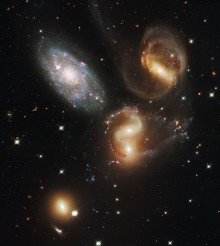Yet again, with so few opportunities to do any actual observing recently, I’m going to take a look at what we can look forward to in the night sky during the rest of July and into August.
Let’s get started with the Moon. Full on Tuesday the 19th of July, it’ll gradually make way for dark evening skies from the following weekend. The next New Moon is on Monday the 1st of August, and it will be full again on the 18th. With the Sun setting by around 9.15, we should be all set for a couple of weeks of darker skies and (hopefully) warm evenings.
No discussion of astronomy in July/August can be complete without mentioning the Perseids, which result from the Earth passing through the debris trail of comet Swift-Tuttle. Beginning on the 17th of July, the meteor shower peaks on the 12th of August, and ends around the 24th. With estimated hourly rates of around one hundred per hour, the Perseids are amongst the most prolific meteor showers, and are well worth making time for. The constellation of Perseus rises in the northeast, and can be found just below and to the left of Cassiopeia (the large ‘W’- shaped constellation).
The Perseus Double Cluster forms the radiant point of the Perseid meteor shower, and is well worth a look. It’s one of my favourite star clusters, and, although visible pretty much all year round, is rising higher in the northeast in the evening, and is getting easier to see, with better contrast the higher it gets. Although visible (just) to the naked eye, binoculars or a small telescope will really reveal the component stars.
During July there’s another meteor shower, the Alpha Capricornids – comprised of the debris of Comet 169P/NEAT. Capricorn is low in the southeast at the moment, and you may be able to spot some of these meteors emanating from that direction. Although they’re fairly infrequent, at only around five per hour, they can be very bright and flaring. Incidentally, although the shower has a pretty low rate at the moment, the Capricornids are expected to become stronger than any other meteor shower over the next couple of hundred years! The Alpha Capricornids peak around the end of July.
In the east, and also peaking around the end of July are the Southern Delta Aquariids – comprising the debris of the Marsden and Kracht Sungrazing comets, These are likely to be fainter than either the Perseids or the Alpha Capricornids, but the rate should be around 16 per hour.
With so many meteors heading our way over the next few weeks, you’d have to be very unlucky not to see at least one! Incidentally, in case you’re wondering what the difference is between meteors, meteorites and asteroids, this should help you: Asteroids are rocky objects of various sizes, without atmospheres, orbiting out there in the Solar System. Meteors are asteroids or comet debris that enter and burn up in the atmosphere (shooting stars). Meteorites are those meteors/asteroids that actually land on earth.
Something else I’m looking forward to seeing again is the Andromeda galaxy (M31), along with its two companion galaxies M32 and M110. Ideally placed in the northeast at around 11pm, Andromeda should be just visible to the naked eye, but is best viewed in binoculars or with a low magnification eyepiece in a telescope. If you’re lucky enough to get a good clear view, M31 can be spectacular, with a dark dust lane running across the galaxy, and the clear 3-D impression that, rather than just a fuzzy and indistinct smudge, this is a flat disc, tipped up slightly.
The constellation of Andromeda is also home to the very nice colourful double star Almach. You’ll probably need a telescope to split the pair, though.
Something that’s definitely on my list at this time of year is the Deer Lick group of galaxies (NGC 7331, the largest member of which is Caldwell 30), just above the great square of Pegasus in the east. You’ll definitely need a telescope for this, but it’s ideally placed (high enough above the horizon, but not too high as to make for awkward viewing), and I’m hoping for good views.
Right next to this group is a tiny collection of five very faint galaxies known as Stephan’s Quintet. This violently interacting galaxy cluster is over 50 million light years away, and may well be beyond the reach of my telescope, but you never know …
What’s up?
All of the above, and more; so go out and look up!
Clear skies!
Kevin Quinn is an amateur astronomer based in Cerne Abbas. He is the proud owner of a ten-inch reflector, a small refractor, a case of eyepieces, and a couple of pairs of binoculars. He tweets via @CerneAstro, and blogs (occasionally) via theastroguy.wordpress.com.
©Kevin Quinn







